The Space Race encapsulates both the best and the worst of aspects of U.S. history. On the one hand, there is humanity’s drive to learn and explore. All space programs have no choice but to celebrate the wonders of mathematics, physics, and engineering. (To put this into ’80s film terms: no matter how jock-ish an image an astronaut wants to put forth, it’s still nerds who get us into space.) Space exploration doesn’t just raise the possibility that humanity will find new homes across the galaxy, but it also leaves technological innovation in its wake.
But there’s still that other hand. The Space Race of the 1950s and 60s was the result of intense hatred and fear between the U.S. and the Soviet Union. Many of the early aims of the program were baldly militaristic rather than scientific. At least one of the leading engineers was a former Nazi. And as idealistic as NASA was, it still enforced rigid racial and gender lines, refusing to allow qualified women to train as astronauts, and segregating Black mathematicians and would-be astronauts for decades. With all of that in mind we’ve rounded up some amazing stories of space—some true, some fictional, some historical, some set, hopefully, in our future—with an eye toward highlighting the stories of those who had to fight even harder to prove they had the right stuff.
The Early Days of the Space Program
Sex and Rockets by John Carter
Buy the Book
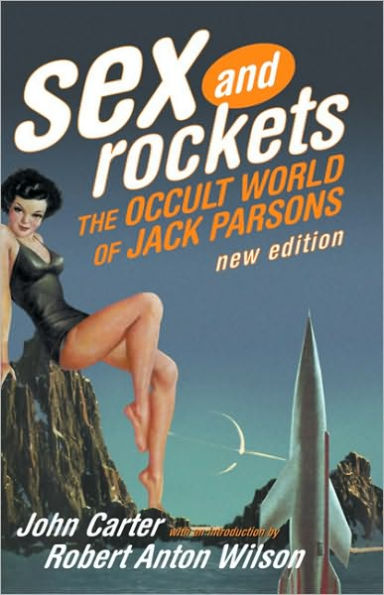

Sex and Rockets: The Occult World of Jack Parsons
We wouldn’t have had a space program without the Jet Propulsion Laboratory. And we wouldn’t have had JPL without Marvel Whiteside “Jack” Parsons, a rocket scientist and occultist who balanced a life of chemical research and progressive activism with his dedication to the teachings of Aleister Crowley. Parsons had to drop out of college repeatedly as the Depression worsened, but instead teamed up with a few other young men to form a group called GALCIT—which became JPL in 1943. The group developed “Jet-Assisted Take Off” which became a vital technology as World War II began, and spent the war developing better rocket fuels. After leaving JPL, Parsons bounced between different research gigs, practicing sex magic, building rockets for the Israeli government, and attempting to call the goddess Babalon with some help from a pre-Dianetics L. Ron Hubbard. The fascinating thing about Parsons is that for him these pursuits were all of a piece: he was trying to make the world a better place. By the time he died in an explosion in 1952, he held seven patents, and JPL was about to become one of the hubs of the US space program. Carter’s Sex and Rockets is a bit sensationalistic, but it also looks at a fascinating, little-known corner of scientific history.
Breaking the Chains of Gravity by Amy Shira Teitel
Buy the Book
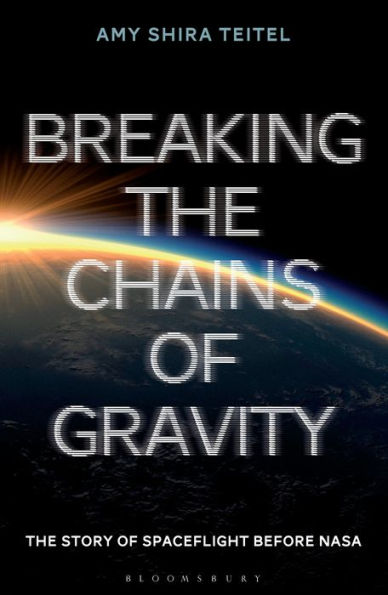

Breaking the Chains of Gravity: The Story of Spaceflight before NASA
Teitel takes us into the prehistory of the Space Race, covering the scientific breakthroughs, strong personalities, and occasional moments of genius that led to the space program. The National Advisory Committee for Aeronautics (which later became NASA) and the U.S. Air Force gathered test pilots and rocket science, pushing planes and rockets faster with each year, exposing the human body to ever more punishing speeds and ever-higher doses of radiation. Teitel chronicles Wernher von Braun’s work on developing rockets, and how, in the wake of Sputnik, Eisenhower began pulling all the threads of research together to form NASA.
Laika by Nick Abadzis
Buy the Book
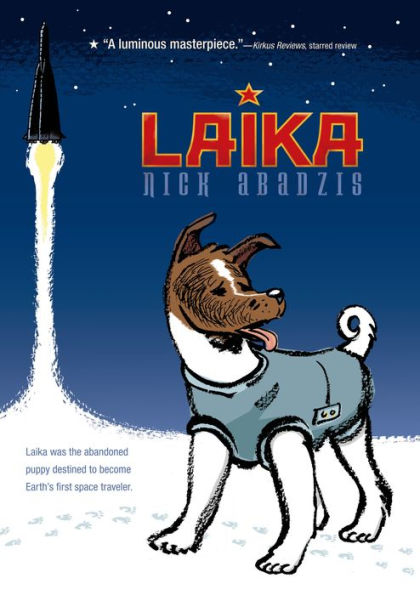

Laika
Nick Abadzis’ graphic novel gives a fictionalized account of Laika’s life in the early Soviet rocket program, the tests that were done on her so her health could be monitored during her flight. It’s a heartbreaking story, as the scientists knew from the beginning she was doomed—her test is meant to see if a living mammal could even survive liftoff, but there was no plan to bring her back. Abadzis’ book devotes some time to the chief engineer who plans and watches her flight, and the lab tech who acts as her primary caretaker before she’s sent up, showing that within the program there was plenty of debate about the ethics of what they were doing.
The Men who were Celebrated
The Right Stuff by Tom Wolfe
Buy the Book
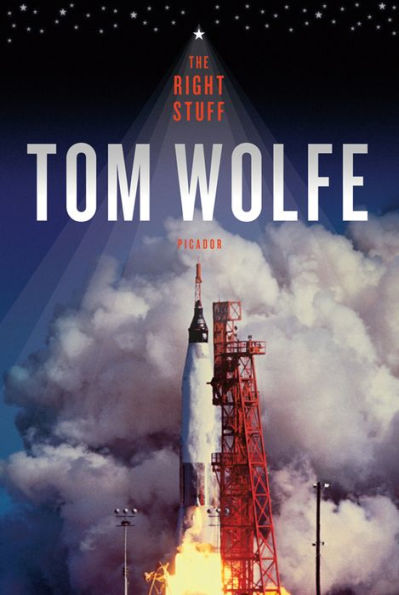

The Right Stuff
Wolfe’s book is the absolute standard in American myth-making. Covering the Mercury Program and the selection of the Mercury 7, it picks up about where Teitel’s book leaves off to cover the particular weird culture that grew up around America’s test pilots, the ways those pilots were tested for space, and the way they were sold to the public. Why should the US funnel so much money into this weird project? How could ordinary US citizens be convinced to treat astronauts as heroes? He also devotes a fair amount of time to the way a side myth was developed around the astronauts’ stoic wives, who spent their days raising the children, keeping perfect homes, and waiting for the knock at the door that would tell them their husbands had died in the latest test.
A Man on the Moon: The Voyages of the Apollo Astronauts by Andrew Chaikin
Buy the Book
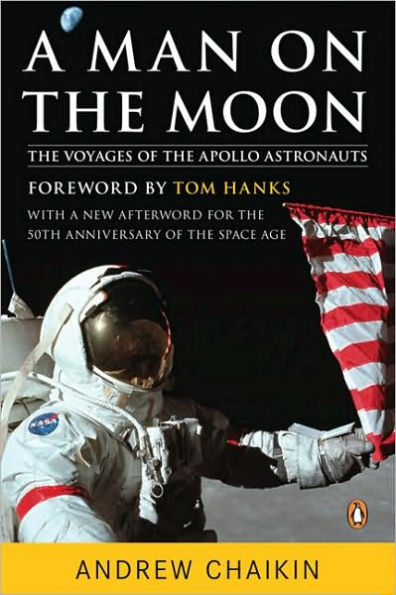

A Man on the Moon: The Voyages of the Apollo Astronauts
A Man on the Moon came out as part of the 25th anniversary celebration for the first lunar landing. The book covers the Apollo program, and interviews the astronauts, ground crew, engineers, wives, and families to create a portrait of the whole program. It covers everything from the tragic fire on Apollo 1 to Alan Shepard whacking golf balls around on the moon during the Apollo 14 mission. It also chronicles moments like John Young’s fateful misstep during Apollo 16, when he tripped over a cable and ruined partner Mark Langseth’s heat-flow experiment, which had been years in the making (You can’t exactly run home for a new cable when you’re on the moon), and of course the terror of Apollo 13, when the U.S. thought their three latest astronauts were either going to asphyxiate in orbit, or burn up on re-entry.
The Women Who Were Erased
Rocket Girl: The Story of Mary Sherman Morgan, America’s First Female Rocket Scientist by George D. Morgan
Buy the Book


Rocket Girl: The Story of Mary Sherman Morgan, America's First Female Rocket Scientist
George D. Morgan’s book is the definition of a labor of love: Morgan spent years researching the early life of his mother, Mary Sherman Morgan, who turned her high school love of science into four years studying chemistry at Minot State University during World War II, and a career with North American Aviation during the 1950s. While there she developed a liquid fuel called Hydyne, which allowed Wernher von Braun’s Jupiter-C rocket to slip the bonds of Earth, and put the U.S. on par with the Soviet Union’s space program for the first time.
Rise of the Rocket Girls: The Women Who Propelled Us, from Missiles to the Moon to Mars by Nathalia Holt
Buy the Book
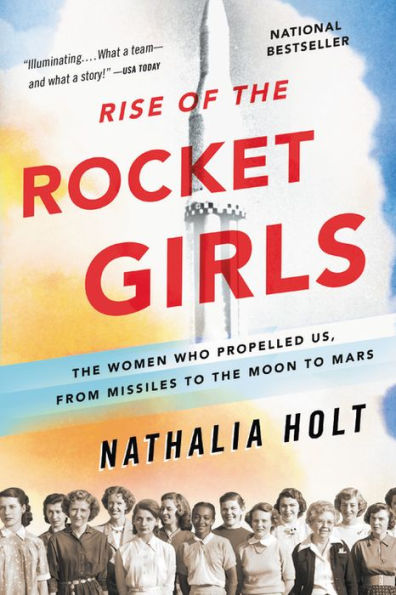

Rise of the Rocket Girls: The Women Who Propelled Us, from Missiles to the Moon to Mars
Nathalia Holt’s discovery of the “Rocket Girls” was purely accidental: she and her husband were trying to pick a name for their first baby, and when they thought of a combo they liked—Eleanor Frances—they decided to look it up to see if any notable people had already had the name. They found Eleanor Francis Helin, a female computer. Holt, who had no idea women even worked for NASA in the 1960s, did a bit of research and discovered a whole group of female computers employed by JPL in Pasadena. She dove into the story and conducted interviews with dozens of women who were employed by the lab between the 1940s and 1960s, often simply cold-calling women with first names like Barbara and Virginia because so many last names had changed with marriages.
Hidden Figures: The American Dream and the Untold Story of the Black Women Mathematicians Who Helped Win the Space Race, by Margot Lee Shetterly
Buy the Book
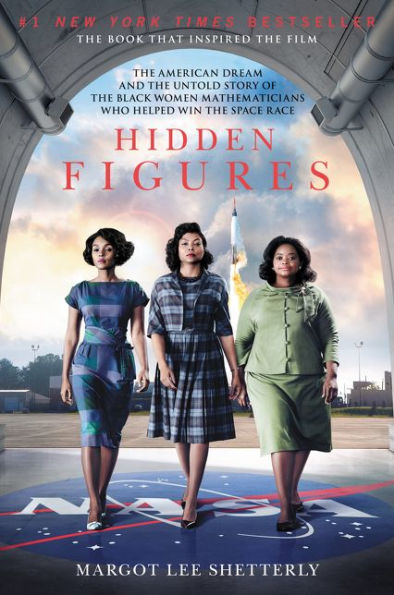

Hidden Figures: The American Dream and the Untold Story of the Black Women Mathematicians Who Helped Win the Space Race
While the women of JPL were an interracial group in Pasadena, Shetterly focuses on the women of NASA’s Langley Base in Hampton, Virginia, where in addition to basic misogyny the Black computers had to deal with the racism of the Jim Crow South. These could be humiliations both overt (Miriam Mann had to tear the cafeteria’s “Colored Computers” sign down each day until her coworkers stopped replacing it) and subtle (Katherine Johnson used the default white bathroom because no one had ever bothered to label it—because no one ever thought a Black mathematician would be working in that department) The book digs into the women’s personal lives, their triumphs at work, and the careers they built after the first rush of the space program began to wear off. It also give a much-expanded view of life and work at Langley, and covers the careers of many more women than could fit into the running time of the (great) film adaptation.
The Mercury 13: The True Story of Thirteen Women and the Dream of Space Flight by Martha Ackmann
Buy the Book
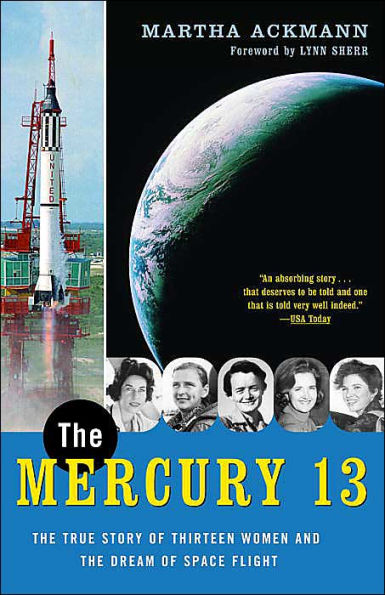

The Mercury 13: The True Story of Thirteen Women and the Dream of Space Flight
The book is an overview of the women who were subjected to the same tests as the men selected for the Mercury Program. They underwent often excruciating physical tests at the Lovelace Foundation, as well as a battery of psychological tests, in order to track differences between mens’ and womens’ reactions. But the thirteen women who passed Phase 1 abruptly learned that they weren’t going to be taken to Pensacola to do the next round of testing, and they were never going to be given a shot at space—despite the fact that several of the women did better than men who had been selected for Mercury. Appeals to NASA and Congress were dismissed, with even John Glenn (who was a vocal supporter of Katherine Johnson) saying that women were unfit for the space program despite literal scientific evidence to the contrary.
Soviet cosmonaut Valentina Tereshkova became the first woman in space in 1963; it wasn’t until 20 years later that Sally Ride became the first American woman in space.
The Astronaut Wives Club by Lily Koppel
Buy the Book
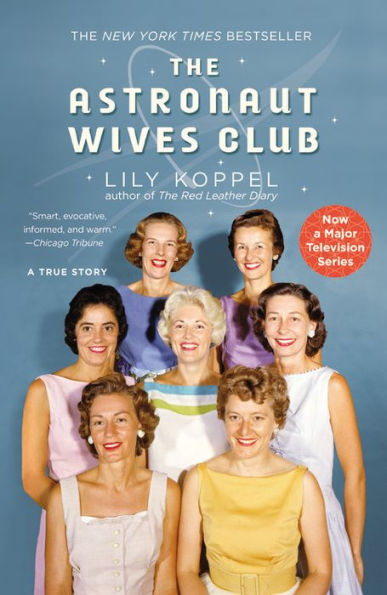

The Astronaut Wives Club: A True Story
The Astronaut Wives Club covers the other side of the public face of the American Space Program: the wives who were expected to stay home, mind the children, and run the household so smoothly that their men could dedicate themselves to going to the moon. Of course what that meant was that they also had to be pretty and patriotic when interviewed, perfectly-coiffed-but-not-snooty when Life Magazine wanted a cover photo, and supportive of each other every time a husband died—because acting out or drinking or going to a psychologist was not an option.
Koppel looks at their lives during and after the main rush of the space race, showing the privileges that came with their husbands’ jobs (Corvettes, tickets to Broadway shows) but also the constant pressures that caused many of the marriages to crack up as soon as the cameras turned the other way.
The Men who Were Erased
We Could not Fail: The First African Americans in the Space Program, by Richard Paul and Steven Moss
Buy the Book
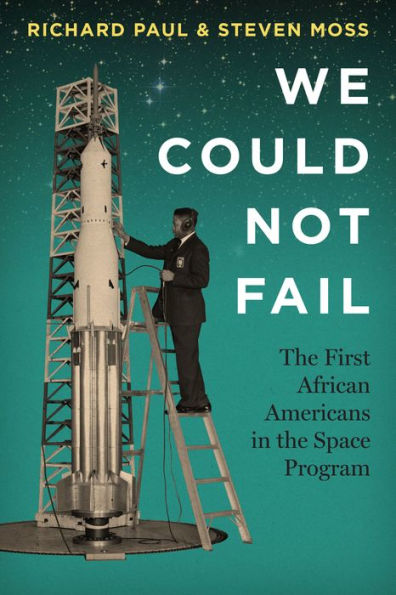

We Could Not Fail: The First African Americans in the Space Program
<LeVar Burton voice>: Have you ever wondered why so many space centers are the in the Southern region of the United States? </LeVar> In the 1960s, it had finally become clear to most centrist white politicians that if the U.S. wanted to keep its post-War economy chugging, it needed to end segregation, and it needed to shoot some adrenaline into the Southern economy. How to do that? Plant some of the highest tech campuses in the world in Houston, Texas, Huntsville, Alabama, the fields of Mississippi, and Brevard County, Florida, ship some scientists down, and force everyone to hire a wide range of men and women, regardless of Jim Crow.
We Could Not Fail profiles ten of the first Black men to be hired by NASA, and shows their struggles and fears as they tackled a job that was already among the hardest on our planet, and had to do it all with the eyes of history boring holes into the back of their necks.
Space Trivia
Amazing Stories of the Space Age by Rod Pyle
Buy the Book
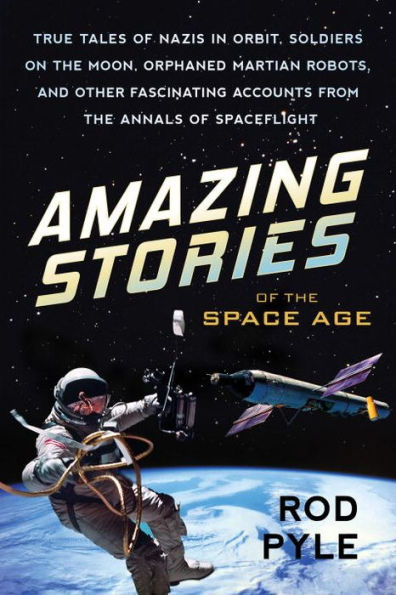

Amazing Stories of the Space Age: True Tales of Nazis in Orbit, Soldiers on the Moon, Orphaned Martian Robots, and Other Fascinating Accounts from the Annals of Spaceflight
Pyle’s fun-but-also-terrifying book covers the space race through anecdotes about all the dead ends and botched attempts at spacecraft, some hilarious, and some terrifying, that play out in the background of the well known stories of Mercury, Gemini, and Apollo. Here you’ll read about an idea to use atomic bombs to blast off (too bad for all the dead/irradiated folks on the ground); the Silverbird, the suborbital plane that the Nazis tried to develop so they could bomb the U.S.; Project Horizon, the plan to open a military base on the moon; and Wernher von Braun’s extensive plans for a mission to Mars. He also details the many, many catastrophes caused by the Soviet Union’s push to beat the U.S. to the moon.
Packing for Mars: The Curious Science of Life in the Void by Mary Roach
Buy the Book
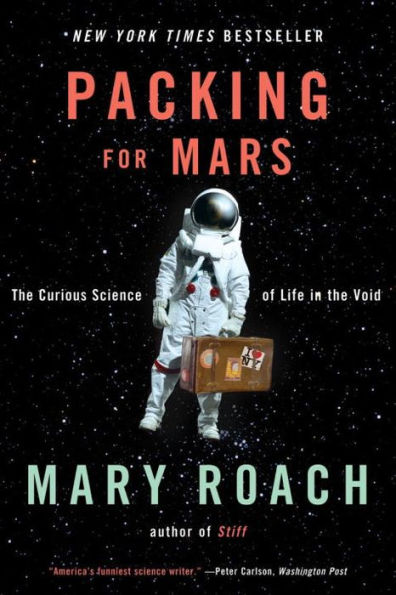

Packing for Mars: The Curious Science of Life in the Void
What happens if you vomit in your helmet during a space walk? How do you use a space toilet? Why does NASA have an insatiable need for cadavers?
…can we go back to the vomit question?
Mary Roach has dug into lots of odd corners of life, from the intricacies of sex to the many, many ways humans have tried to either prove or disprove the existence of ghosts. In Packing for Mars, she uses that same attention to detail to look at what it’s going to take for humanity to move off-planet. She looks at the effects of space on the human body and the human mind, observes NASA’s capsule crash tests (that’s where the cadavers come in), drinks her own urine, and talks to Japanese astronaut hopefuls who have to fold 1,000 paper cranes to test their psychological fitness, all to show us just how much effort it’s going to take to get us off this rock.
Our Factual Future (Maybe)
Soonish: Ten Emerging Technologies That’ll Improve And/Or Ruin Everything, by Kelly and Zach Weinersmith
Buy the Book
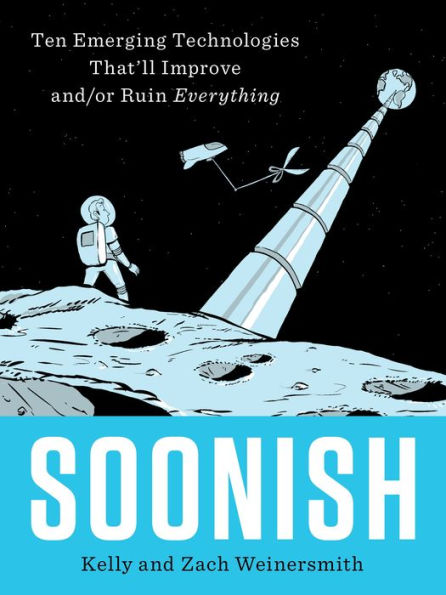

Soonish: Ten Emerging Technologies That'll Improve and/or Ruin Everything
Dr. Kelly Weinersmith is a bioscience researcher at Rice University, who specializes in studying parasites that attach themselves to their hosts and then manipulate their behavior (shudder) and her husband Zach is the cartoonist behind Saturday Morning Breakfast Cereal, a hilarious nerd webcomics that probably features some of the best God cameos on the internet. The two teamed up to delve into the weird and hopeful world of near-future tech, looking at the possibilities of asteroid mining, 3D printing, space elevators, and robotics. While it isn’t only a space travel book, many of the innovations the Weinersmiths feature are specifically designed to either get ordinary people into space, or to make them more comfortable once they’re there. The two interview researches and engineers to hazards some predictions about the future, and to theorize the various ways those futures might be all we could dream of… or might end with us enslaved by cookie-wielding robots.
Our Fictional Past
The Calculating Stars by Mary Robinette Kowal
Buy the Book
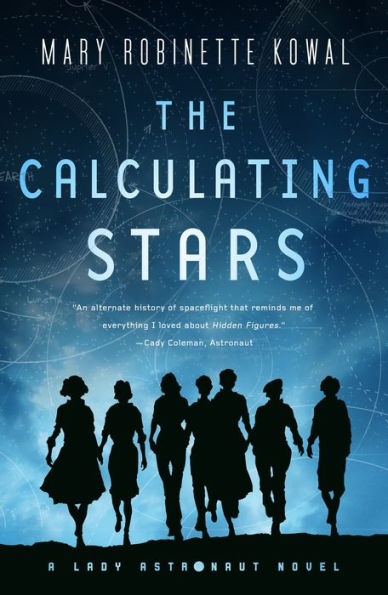

The Calculating Stars: A Lady Astronaut Novel
Kowal’s The Calculating Stars is set in the universe of her Hugo Award-winning novelette “The Lady Astronaut of Mars.” On a cold spring night in 1952, a meteorite falls to earth and destroys much of the eastern seaboard of the United States, including Washington D.C. The Meteor, as it is popularly known, decimates the U.S. government and paves the way for a catastrophic climate change that will make Earth unlivable. After mathematician and pilot Elma York calculates the approximate date when the sea will boil, she and score of other people throw themselves into an international space race—not the U.S. versus Soviet Union, but humanity against an inexorable ticking clock. But even with such a looming threat, the International Aerospace Coalition is only attempting to put a man on the moon. It doesn’t take long before Elma begins to wonder: why can’t she and the IAC’s women go into space, too?
Our Fictional Future
The Martian by Andy Weir
Buy the Book
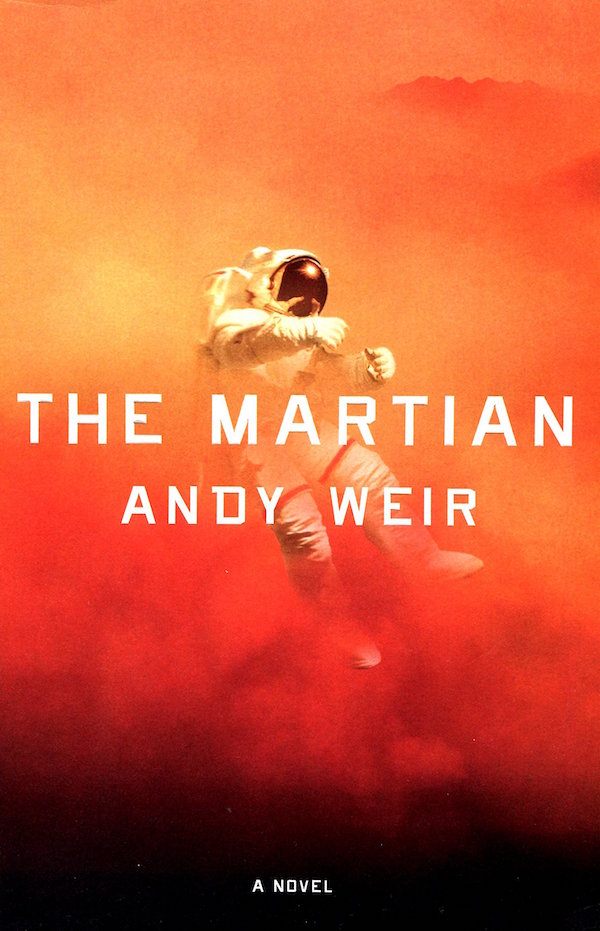

The Martian
Andy Weir’s man-versus-nature story ups every possible stake by stranding snarky botanist Mark Watney on Mars, and leaving him there with tenuous shelter and a severe lack of food. He proceeds to science the shit out of his situation, literally using his own waste to become Mars’ first farmer, trying to eke enough potatoes out that he can last until rescue. His story is told through his own darkly funny journal entries interspersed with accounts of the poor guys back at NASA who realize he’s still alive up there, and his guilt-stricken crewmates who have to decide how much they’re willing to risk to get him back.
Spaceman of Bohemia by Jaroslav Kalfař
Buy the Book
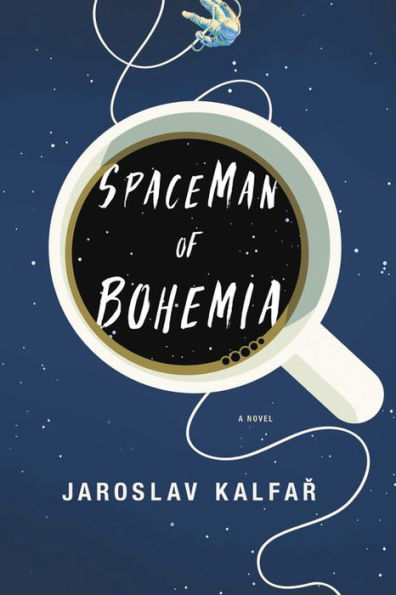

Spaceman of Bohemia
The first Czech astronaut, Jakub Prochazka, heads off in the name of science to investigate a weird celestial dust cloud called Chopra, and also to bring glory to the Czech people. He soon becomes overwhelmed by memories of his life in Czech, his fraught relationship with his wife, and his increasingly vivid memories of his communist sympathizer father—who may have been a state-sanctioned torturer.
And then, he meets a space spider. A giant cosmic spider, with a human mouth, named Hanusz, who looooves Nutella. Is Hanusz real? Is Jakub dying? Honestly, does it matter when a book manages to be hilarious and heart-wrenching, often within the same sentence?










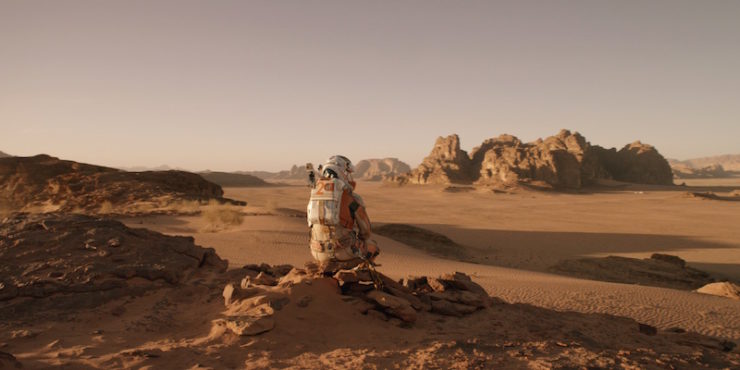
The brave men (and women) of NASA who struggled to deal with ever increasing complications in their personal lives, all the while maintaining the highest levels of personal competence while operating experimental craft along with the hazards of dealing with alternate forms of sapient life.
I Dream of Jeannie.
:)
A great list, however I would recommend Strange Angel by George Pendel over Sex and Rockets. The former is better written in my opinion, and Sex and Rockets has some inaccuracies and I believe too strong a focus on Parson’s religious beliefs. While they are obviously important it I don’t think they need as much emphasis as the book provides. It also has an incredibly terrible introduction (not written by the author) that is mostly weird conspiracy theories and untrue history about the Freemasons, claiming they are an ancient secret society founded by Jesus.
This list needs the fabulous manga “PLANETES”, by Makoto Yukimura. The story follows a group of blue-collar space-garbage-people in the context of the beginning of space exploration. Mankind has already established bases on the Moon and is beginning to reach further, beyond Mars, but all the space activity leaves lots of debries floating around the globe and jeopardizing vessels and people; enter junk-collectors.
The manga isn’t just really good hard sci-fi and very reallistic in its depiction of life in and around space, but it also explores the difficult dichotomy of us, humans, as drivien by curiosity and exploration, but also in need of not loosing our humanity in the process of following our motivations and dreams. It deals with family, obsession, love, self-realization, sacrifice, friendship, conflict, work, and so much more. All of that, with some of the best written believable working class adults in manga.
It’s really exciting (and of course I’m a bit biased as a woman in a STEM field) to see all the stories about ‘erased’ women/minority scientists come to light – as if we haven’t always been there, regardless of the barriers and notions about men vs women’s work. One wonders how many other girls might have been able to contribute.
For fiction about early space travel I recommend Heinlein’s cheesy-but-fun Rocket Ship Galileo–kids build a rocket as a hobby project!
This book is forever burned in the memory of me and my friends as Nazis on the Moon!
Stephen Baxter wrote three thematically linked novels (sometimes called the NASA trilogy) about the space program and space exploration in an alternate past: Voyage, Titan, and Moonseed
The anime Space Brothers, about two brothers who, as children, both swore to become astronauts but end up taking very different paths to get there. It’s set in a near future where NASA has a small lunar outpost, and the first manned mission to Mars is on the drawing board –close enough to be in reach for a just-starting-out astronaut candidate.
The whole show is a love letter to the space program as we follow both characters from childhood through astronaut training to space.
I would add to this list Angle of Attack: Harrison Storms and the Race to the Moon by Mike Gray. It’s a fascinating behind the scenes story of the engineers and engineering that landed us on the moon.
For me, the seminal book was Rockets, Missiles and Space Travel by Willy Ley. Even before I was old enough to read the text, I was leafing through it looking at the pictures.
And as idealistic as NASA was, it still enforced rigid racial and gender lines … segregating Black mathematicians and would-be astronauts for decades.
No, not really.
Segregation at the Langley Aeronautical Laboratory (the site of the Hidden Figures story) ended in 1958, the same year that NASA was created.
And there was no “segregation” for astronauts. Neither the first African-American astronaut candidate (Ed Dwight, selected for the NASA program in 1961) nor the second (Robert Lawrence, selected for the Air Force’s Manned Orbiting Laboratory program in 1967), were “segregated” from their white counterparts.
(This doesn’t, of course, mean they didn’t face discrimination: Ed Dwight has said that the various forms of unofficial and semi-official pressure and discouragement he experienced after Kennedy’s assassination removed his main advocate eventually drove him to resign from the program.)
(Robert Lawrence, sadly, died in a test-flight crash in late 1967. Had he lived, there’s a decent chance he would have been the first African-American in space, since most of the other Manned Orbiting Laboratory astronauts all transferred to NASA when the MOL was cancelled in 1969, and were among the first Space Shuttle astronauts.)
This list is so cool! I remember reading Space, The Right Stuff, and the Chuck Yeager biography while in Junior High and how fascinated I was by the various personalitiew and the incredible complexity and the huge number of people involved with the space race, can’t wait to check these out!